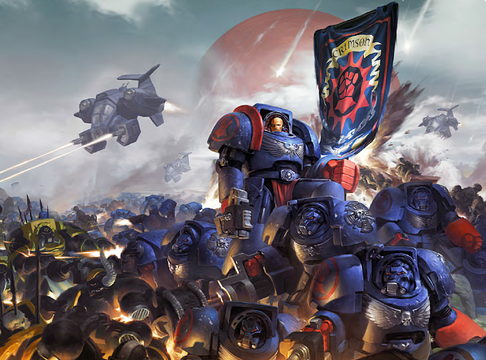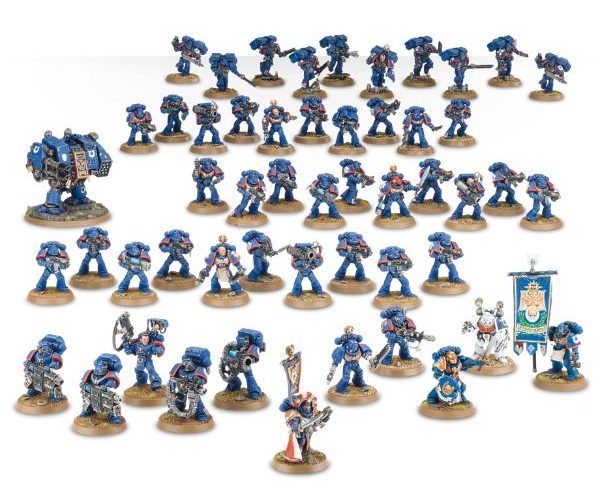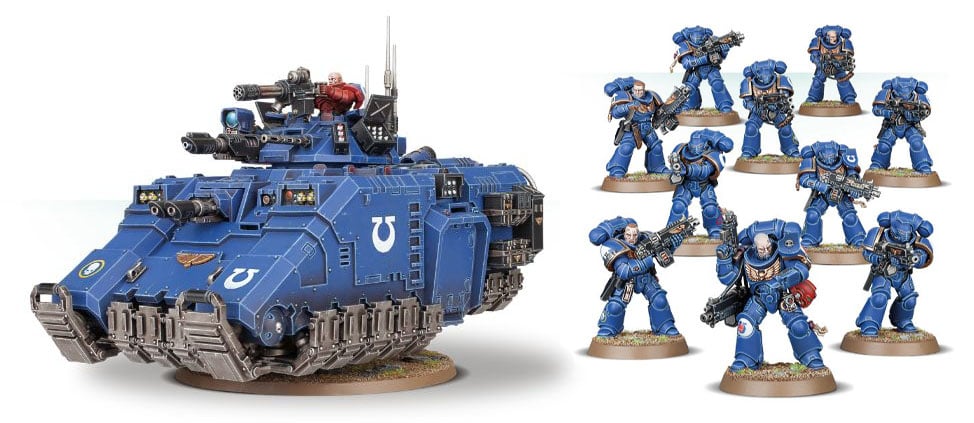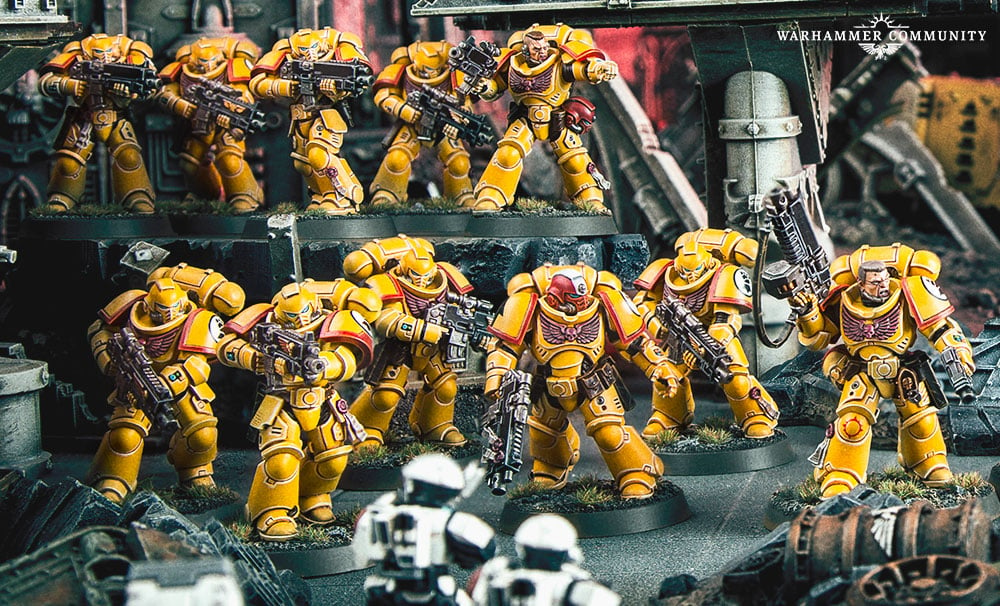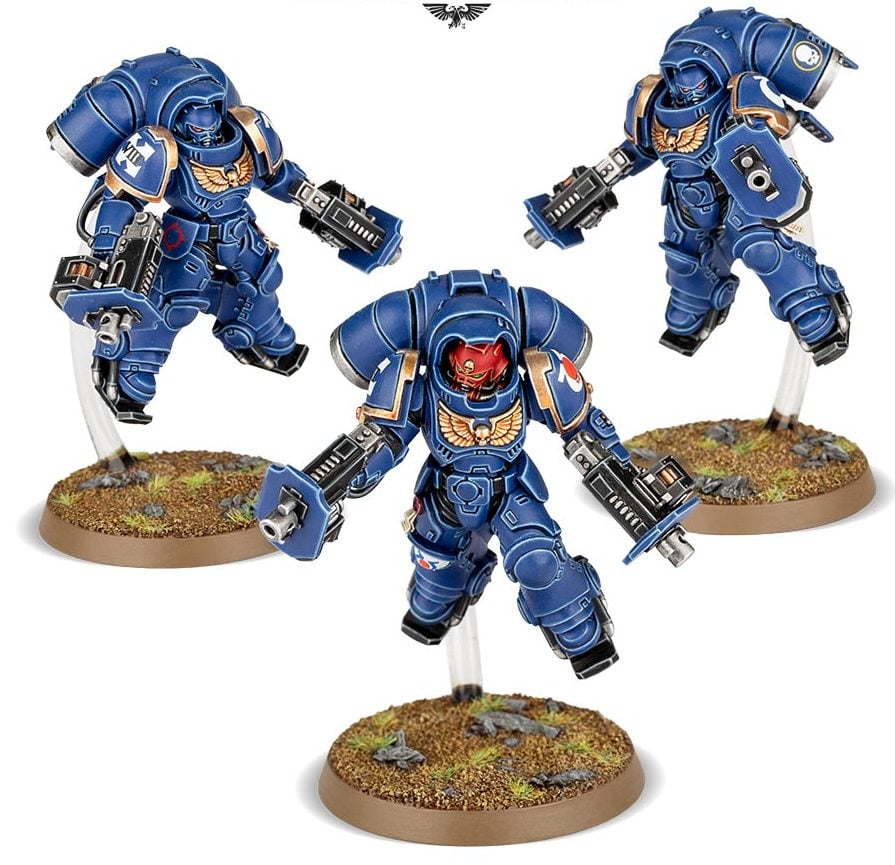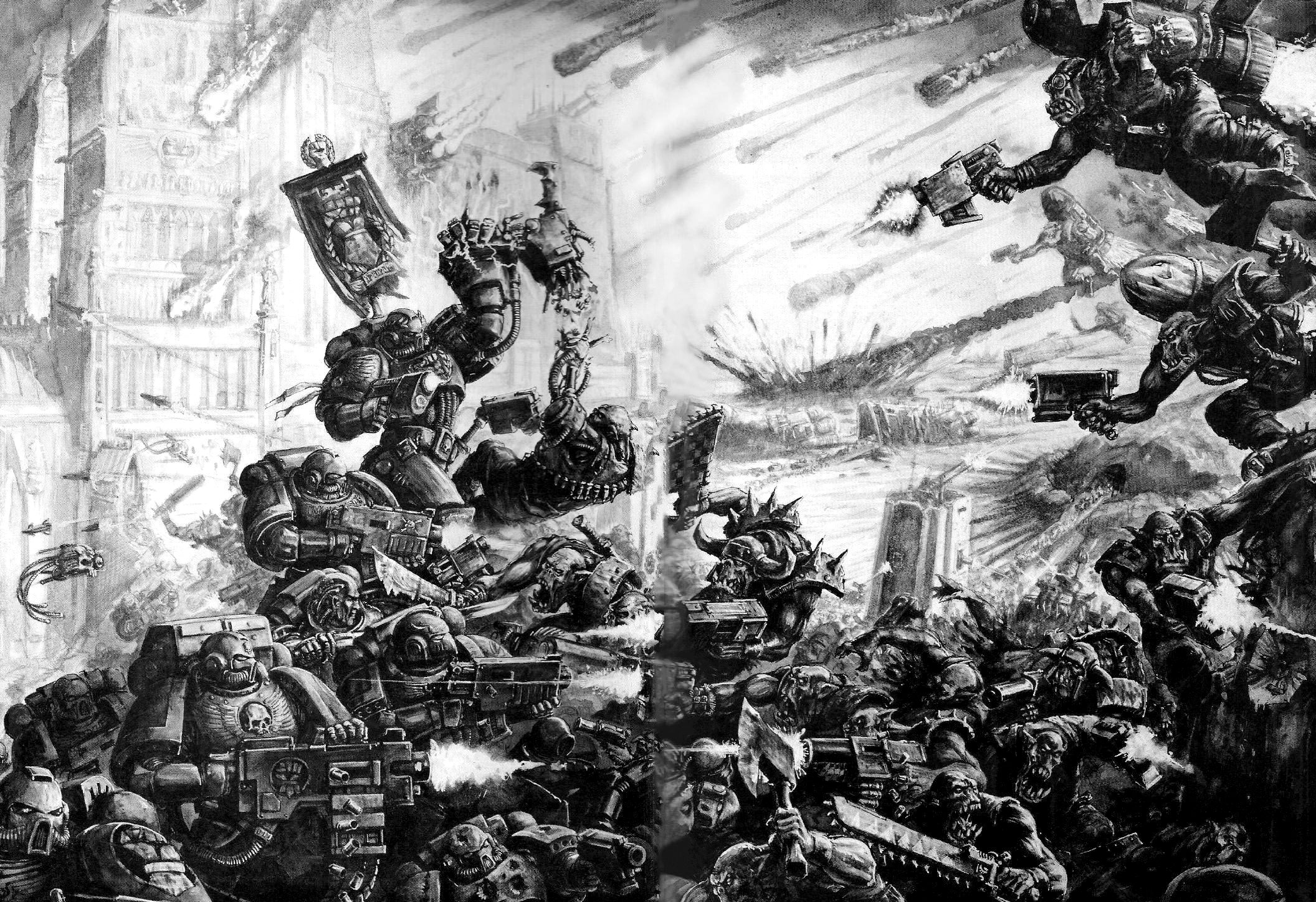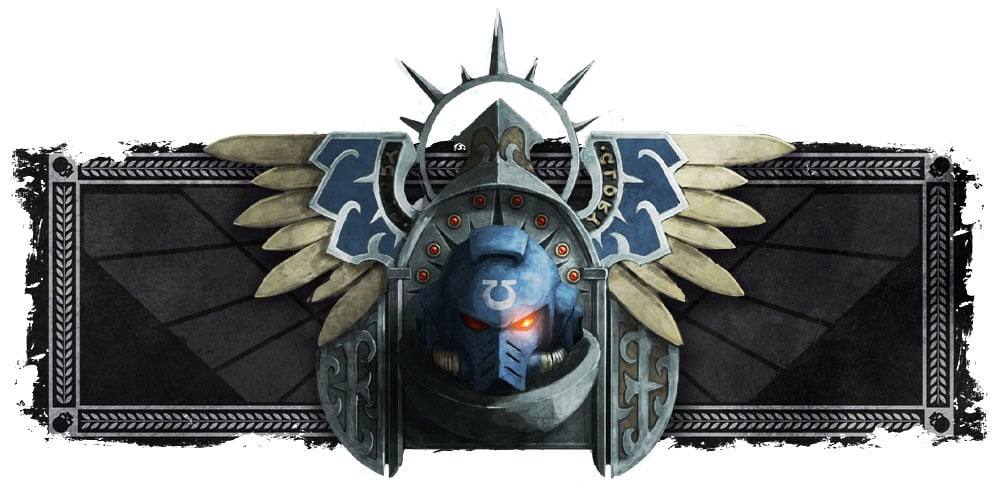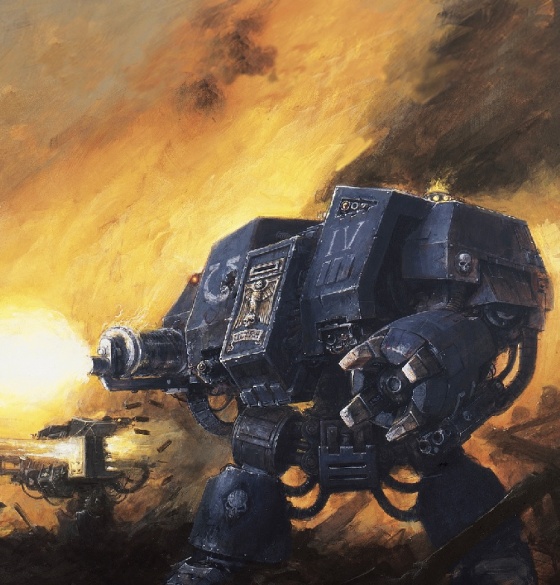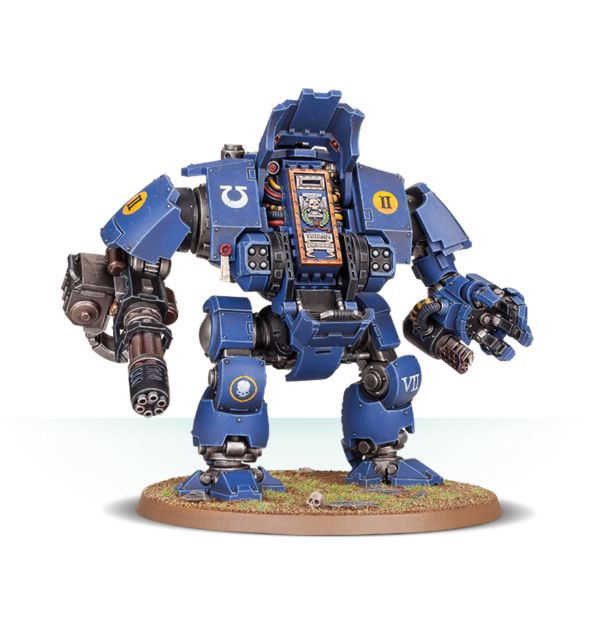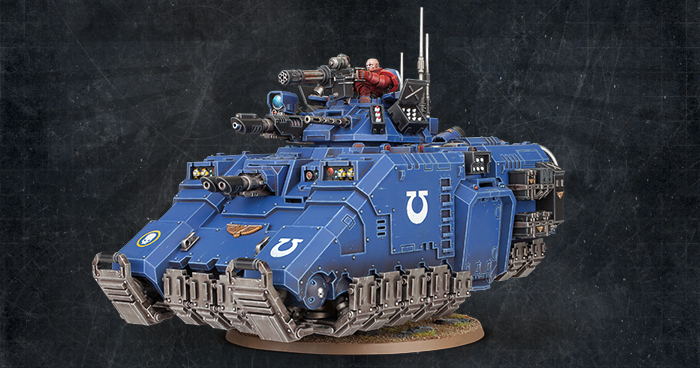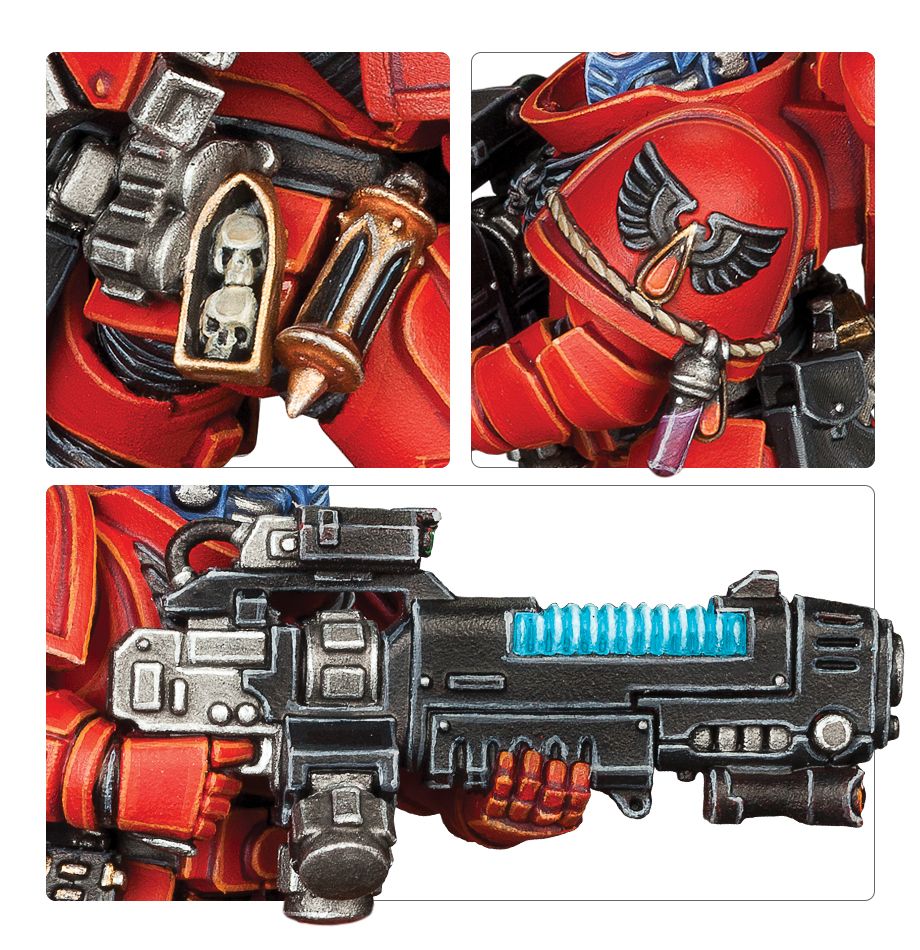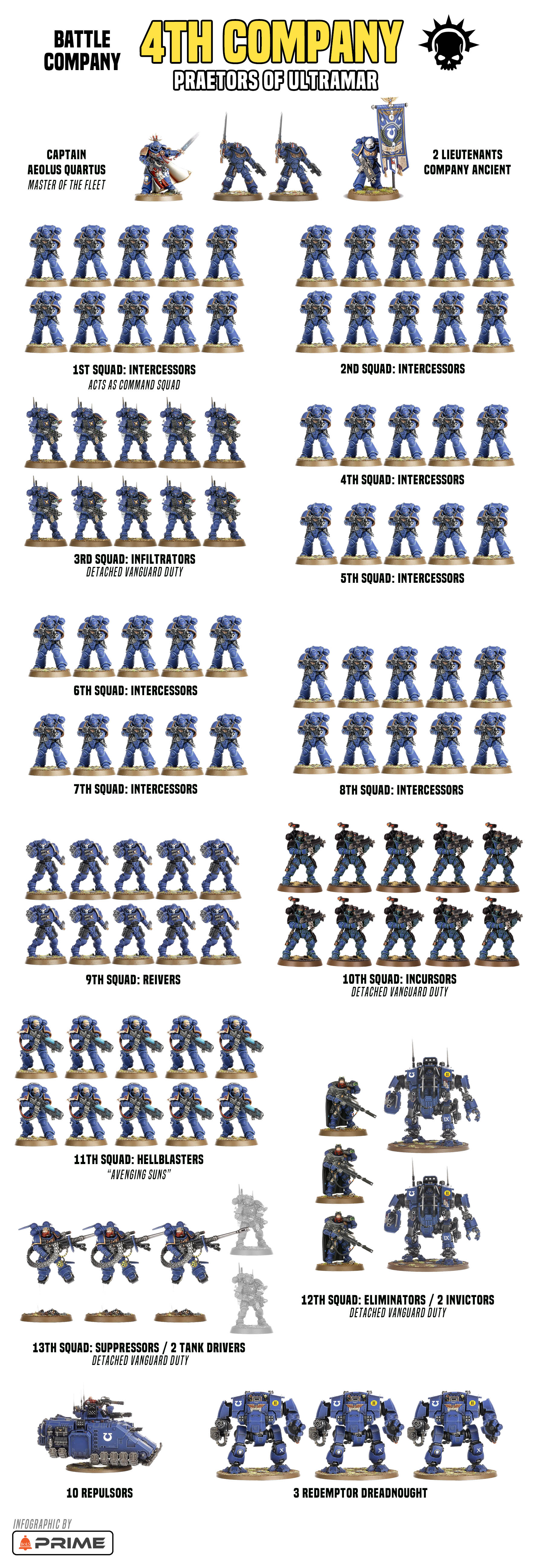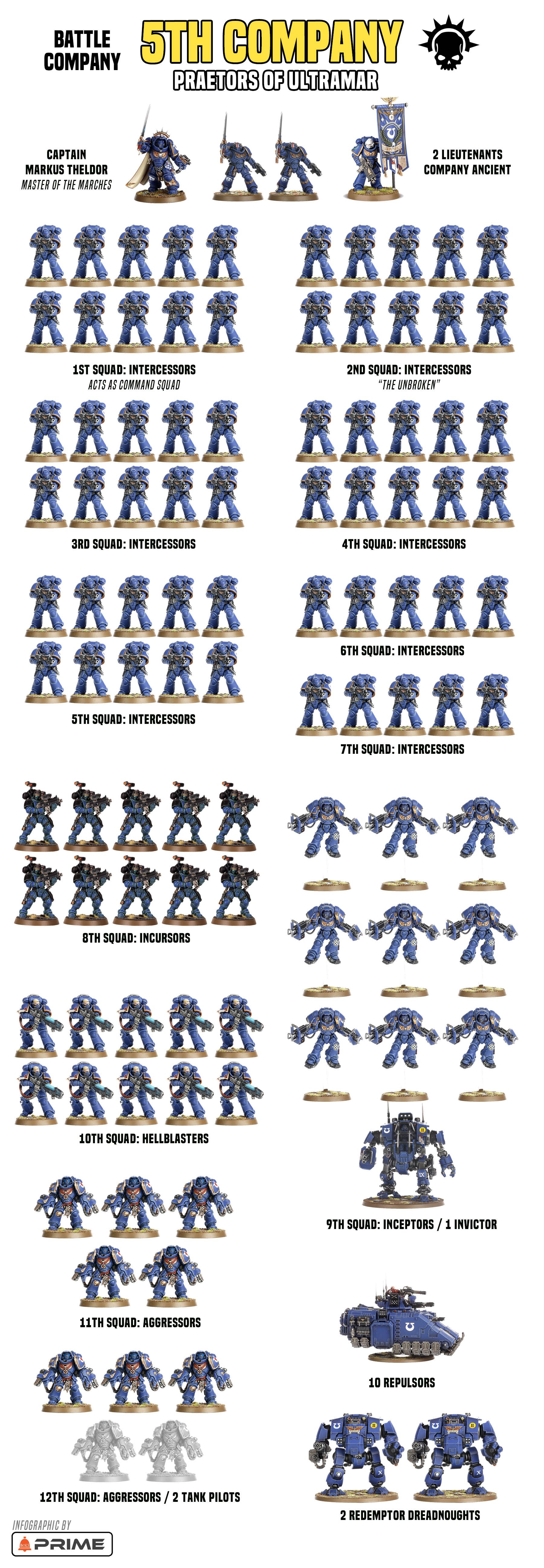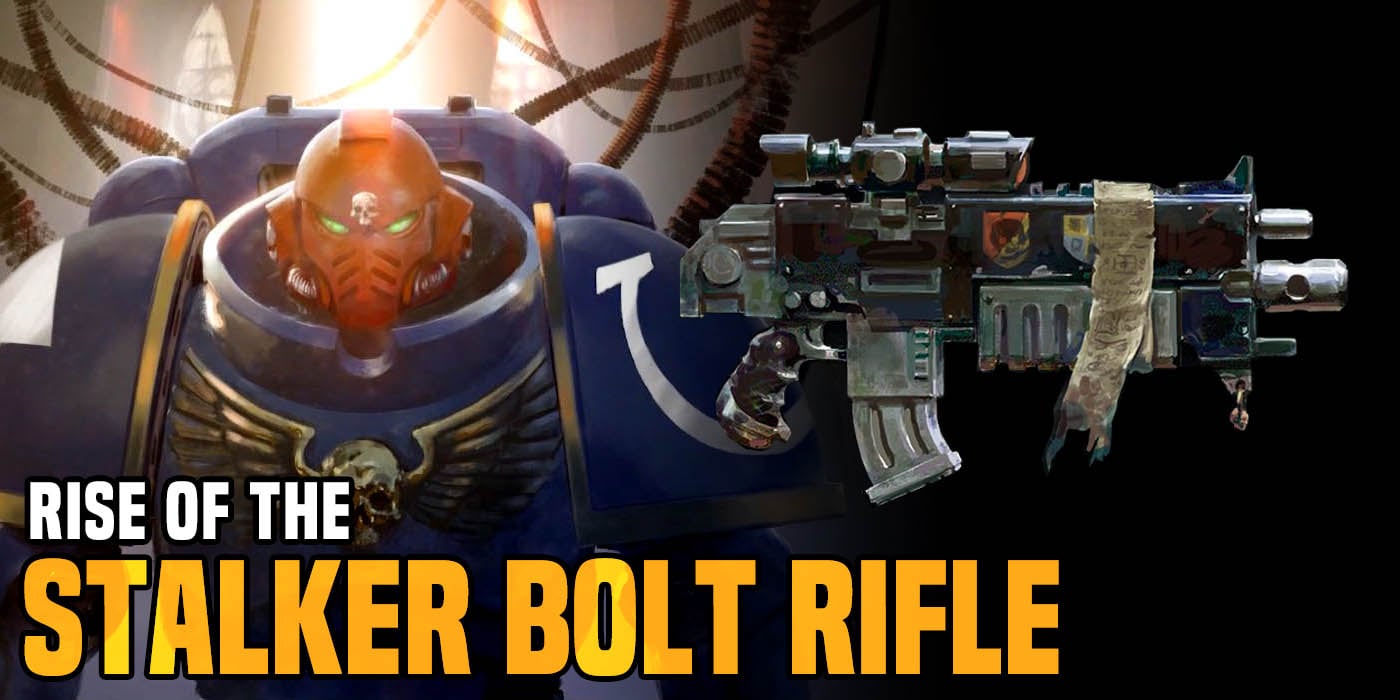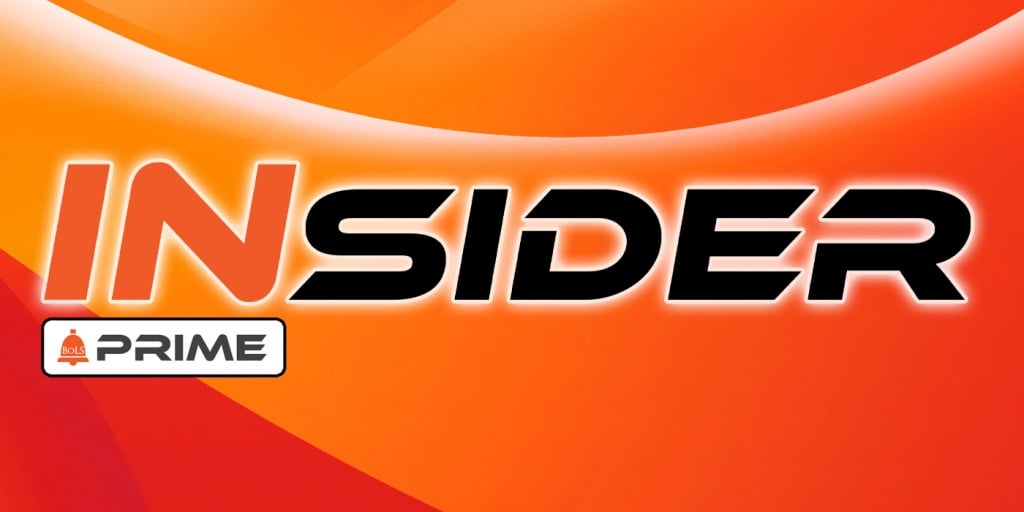Warhammer 40K: How Space Marines Fight – Battle Companies New Vs Old – Prime
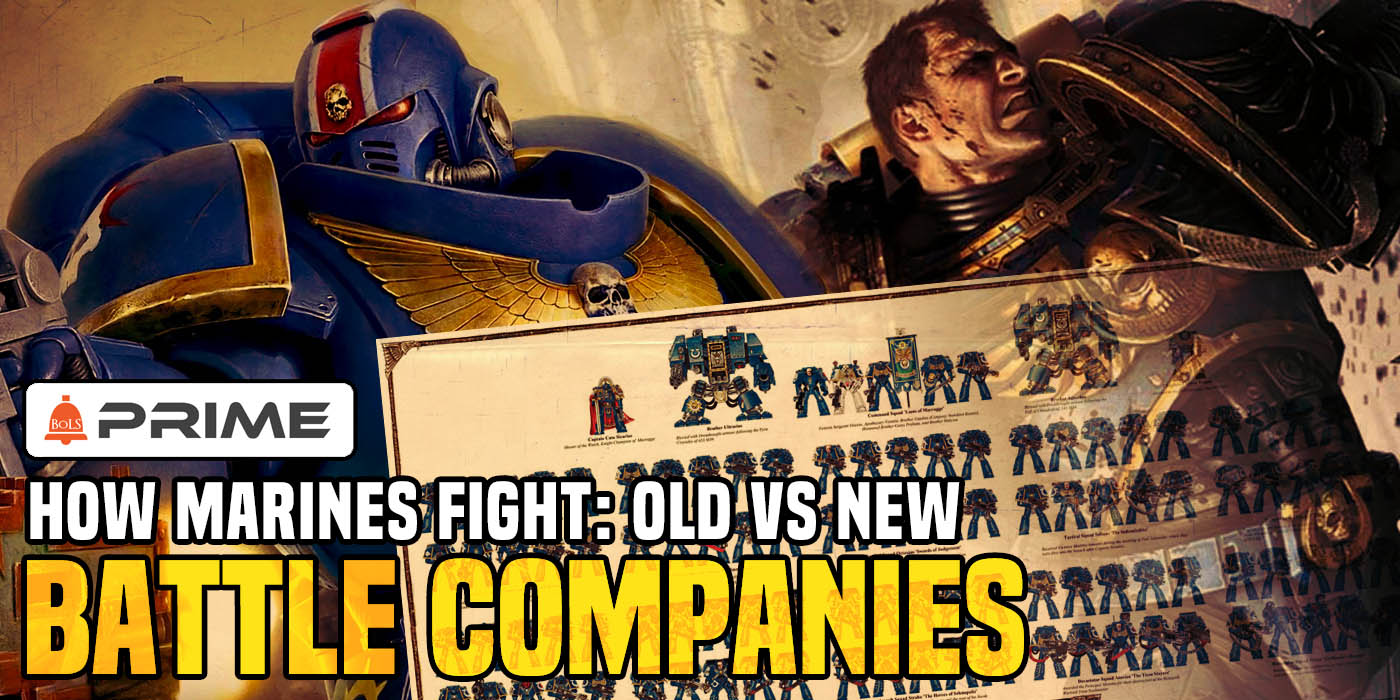
Today let’s take a look at how Cawl’s innovations have transformed how the modern Space Marine Companies fight.
Space Marines are the center of Warhammer 40,000, and represent, for their size, the most deadly fighting force in the galaxy. They operate according to the Codex Astartes; itself built on lessons and the ways Space Marines have operated since the days of the Unification Wars. As such, Classic Marines (the pre-Primaris Marines) operate within some fixed guidelines and in some precise ways.
Previously we’ve looked at how the Classic, non-Primaris, Marines fought and how that was heavily based on the armies of WWII. We’ve also taken a look at how Belisarius Cawl changed the way Primaris Marines fought, leading to a military renaissance as well as the real-world sources, the designers drew on in creating the Primaris Space Marine way of warfare. We have focused on the core squads previously; today lets look at the bigger picture of how Primaris Companies were reorganized.
The Inflexible Company 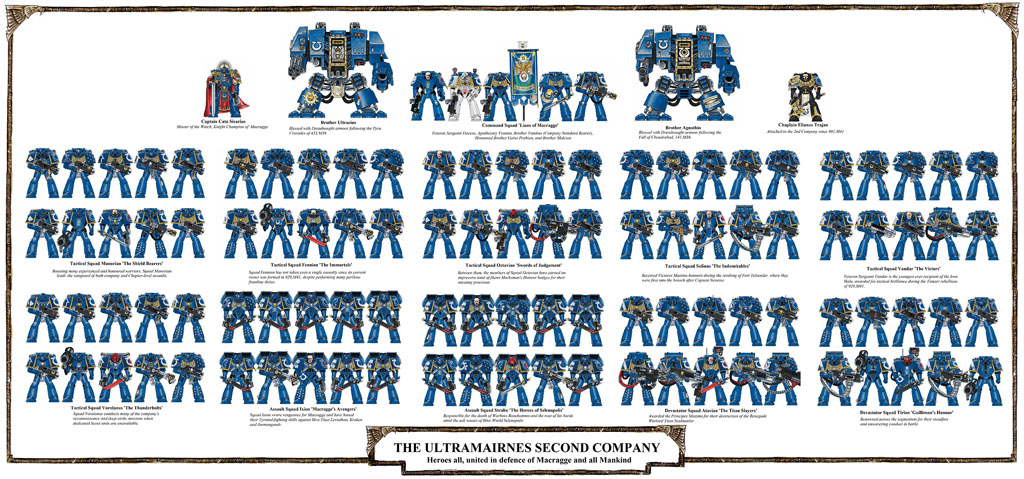
Previously we’ve discussed how the makeup of the classic Tactical Squad was based on WWII infantry units, in particular British Paratroopers units circa 1944. As we saw, this lead to a squad that had a fair amount of flexibility. It was able to carry a mixed loadout and respond to a variety of threats, from armor to infantry, while maintaining a degree of mobility. This matched well with the fact that Marines are often deployed in small independent strike forces, and single squads required a level of flexibility. It also very much placed them in the role of an infantry formation. While individual squads have a high degree of flexibility, the old-style companies, a core Space Marine formation, do not. As such, it’s worth taking a bit to look at how the Chapter operates on a larger scale. We’ve covered some of this in previous articles, but it’s worth looking at again.
A Classic Marine Chapter has a limited number of unit types its can field. While it does have a lot of flexibility, much of this is located at the Chapter level and not the level of the individual companies. The most common unit type in a Classic Chapter is the Tactical Squad. Ultimately having more Tactical Squads may give you a greater force, but it does not fundamentally change what your force can do. At best, it allows you to field a greater variety of heavy and special weapons, which can give you some flexibility. Still, Tactical Squads are a very inefficient way of fielding these weapons. More Tactical Squad won’t significantly increase your tactical and strategic options. For that, you need different types of squads. The rigid organization of the Classic Marines leaves many companies with limited options, though.
The archetypal Space Marine Company is the Battle Company. Before updates to the Codex, the Battle Company contained ten Marine squads, six Tactical Squads, two Assault Squads, and two Devastator Squads. While the Tactical Squad is a flexible unit, the Assault and Devastator Squads are far less so. Depending on different sources, a Company might also contain natively attached Bikes and Land Speeders, though some sources have these controlled at the Chapter level. Regardless of that question, the classic Company contains no light or heavy infantry. They have no tanks outside of lightly armed Rhino APCs, no specialized veteran units, no anti-air units, and its mobile heavy firepower is limited to optional and slow-moving Dreadnoughts. Battle Company Marines are very locked into a single role.
The Battle Company Remade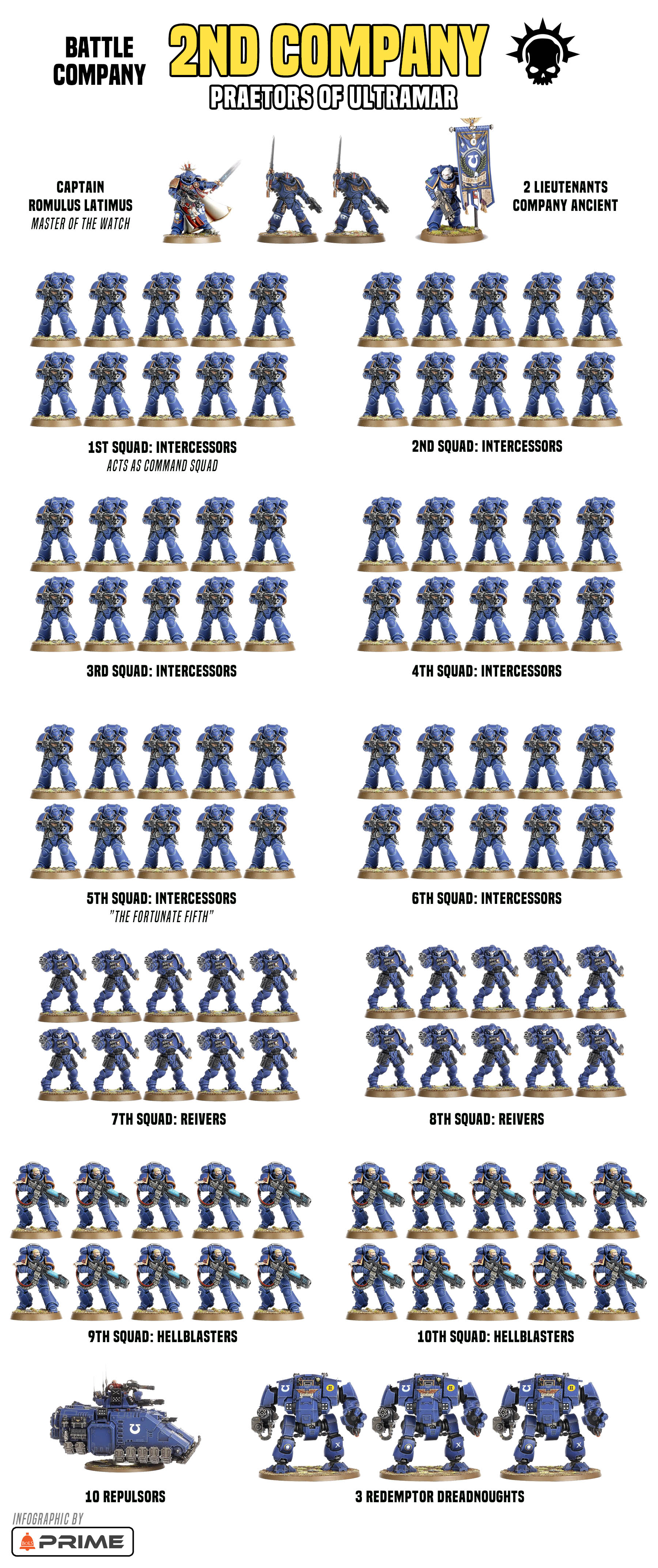
Cawl’s military advancements have fundamentally remade the Space Marine Chapter and Company and transformed what was inflexible and underpowered into a genuinely deadly fighting force. We’ve already taken a good look at how the deadly Intercessor/Repulsor Combo fundamentally remakes the Battleline Squad. With Intercessors acting as the solid infantry to hold ground and protect targets and the Repulsor as the heavy firepower of the squad, now let’s see how that has transformed the Company as a whole.
One of the first major changes we see in new style companies is a change from squad types to squad roles in their organization. Rather than have a company made up of the rigid six Tactical Squads, two Assault Squads, and two Devastator Squads, the new style company is made up of six Battleline Squads, two Close Support Squads, and Two Fire Support Squads. In theory, a Classic Marine Company would be reformed to use this new system as well. Still, Classic Marines simply lack the same variety of choices here (for instance, Tactical Squads are the ONLY type of Battleline Squad they have), and even when they have a variety the equipment, such as Centurion Suits, these are rare. The Ultramarines have only 24 Centurion suits, for example, and they are held in the shared Chapter Armory to be doled out as needed.
In contrast, Primaries units have several viable options for each Squad role. Due to the flexibility of MK. X armor a Marines armor can be quickly refitted so that they can fill alternate roles as needed, they do not need a separate suit of armor to fill the new rule, simply the proper mods for their armor. Now it is not clear how common these mods are, attachment to turn standard MK. 10 armor into either Gravis or Phobos are. How many, Inceptors, for instance, a Chapter can field is an open question; as is the question of whether these mods and the weapons need to outfit them, are kept at the Chapter or Company level.
I would argue that the implication is that these mods are common and likely native to the Companies. The existence of the Rudense class ships, designed to carry and drop fifty-five Inceptors at once, implies that such a large scale deployment is common enough to justify the creating of a specialized craft for the purpose. Moreover, changing the base squads to squad role rather than squad types means we don’t actually know what the “default” organizations are.
We tend to assume that the squads default to Intercessors, Reivers and Hellblasters, but this is based mainly on the fact that those units being released first and are the most commonly released in the fluff, as well as the fact that they are the closest analogies to the Classic Marine organization. There is no hard evidence to support this, and it could be valid for a Primaris Chapter to default to a formation made up of Infiltrators, Inceptors, and Aggressors, with them only deploying as Intercessors or Hellbalsters if the mission calls for it. Also, creating easily modified and highly flexible armor that makes the need for various suits of armor obsolete and then limited the ability to alter that same armor to a Chapter Command level seems self-defeating. However, we must admit it wouldn’t be the first time Space Marines have acted in a self-defeating manner.
This leads to a company that is much more flexible overall. While each squad lacks flexibly in any one configuration, the company can refigure squads as needed. Also, greater squad variety means the Company has a lot more options available to them. The new Company is not just more flexible but carries far more firepower than the old.
A Comparison of Firepower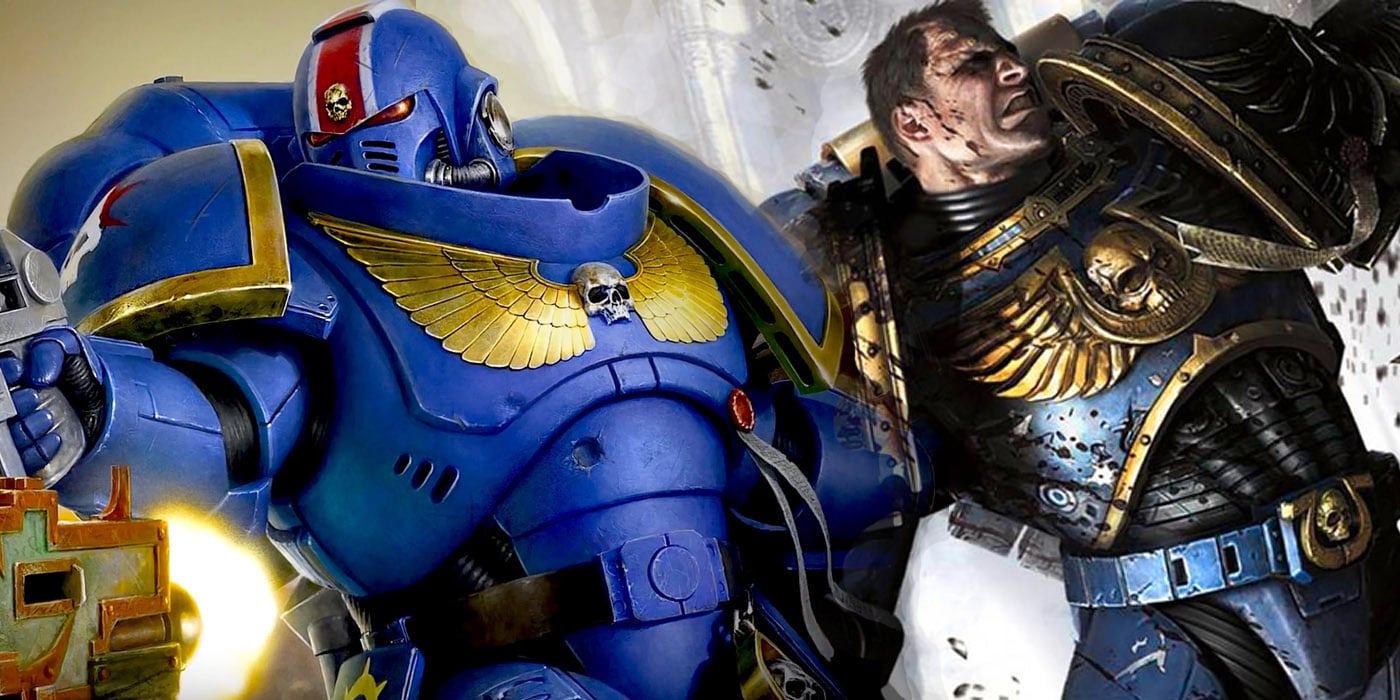
To demonstrate just how much more deadly the Primaris Company is than its predecessor, let us compare the firepower the respective companies could put out. For this example, we will look at only equipment that we can assume is native to the company without drawing on Chapter assets.
Classic Marine Battle Company Firepower
Taking the organization of the Ultramarines 2nd Company, which you can see above, as an example, we can deduce the following about their firepower. The Company contains six Tactical Squads, each squad includes one heavy and one special weapon, for a total of six of each as well as on average eight bolters (we will address sergeant weapons in a bit) for a total of forty-eight. The two Assault Squads carry a total of four special weapons and sixteen bolt pistols. The two Devastator Squads add eight more heavy weapons and another twelve bolters. Chapter Command seems to add, let’s say two special weapons, three bolters and a bolt pistol. Two Dreadnoughts give us two more heavy weapons and two Stormbolters. At default, the ten attached Rhinos give us an additional ten more Stormbolters. I am here only counting what we might consider the Primary ranged armament of each unit as virtually every Marine listed also carries a sidearm and several grenades not listed here.
So this gives us a base of the following:
- 63 Bolters
- 12 Special Weapons
- 16 Heavy Weapons
- 17 Bolt Pistols
- 12 Stormbolters
Conceivably there are a few alternations that could be made. All ten sergeants could exchange their stock weapons for a special weapon of some type (such as a plasma pistol or combi-weapon). Also, the Rhinos could all be equipped with both an extra Strombolter and a Hunterkiller missile. These changes would affect the firepower as so:
- 55 Bolters
- 22 Special Weapons
- 16 Heavy Weapons
- 15 Bolt Pistols
- 22 Stormbolters
- 10 Hunterkiller Missiles
In addition to these common changes, a Company could have more or fewer Dreadnoughts and Dreadnoughts of different types/load-outs in theory. The Company Command could have slightly different equipment, and there remains the question of Bikes and Land Speeders at the Company Level. Given the load-outs shown in recent Company diagrams, what we have presented here seems a solid average for an old school Battle Companies primary armament. Let’s compare this to the firepower of a Primaries Battle Company.
Primaris Battle Company Firepower
A “stock” Primaris Battle Company includes six Intercessors Squads, each equipped with ten of some pattern of Bolt Rifle and two underslung grenade launchers. For the purpose of determining “primary” weapon, we will count this as eight Bolt Rifles and two special weapons, for a total of twelve special weapons and 48 Bolt Rifles. The Company also contains two ten-man Reiver Squads, the stock loadout for them would have them with Bolt Carbines for twenty bolt carbines. Also, we have two ten-man squads of Hellblasters for what we can count as twenty heavy weapons (though arguably it could be twenty special weapons). We don’t know of any Company Command for Primaris Companies outside of a Captain, two Lts, and an Ancient, so that adds one more special weapon and three bolt rifles. Assuming two Dreadnoughts, for fairness, that would add four more heavy weapons and four Stormbolters (we will go for Stormbolters over frag launchers for ease of comparison).
Lastly, the Companies ten Repulsors add a staggering amount of firepower in the form of five heavy weapons, two special weapons (the Krakstorm Launchers), and two Stormbolters each for a total of fifty heavy weapons, twenty special weapons, and twenty Stormbolters. This gives us a total of:
- 51 Bolt Rifles
- 20 Bolt Carbines
- 33 Special Weapons (53 if we count Hellblasters as Special Weapons)
- 78 Heavy Weapons (58 if we count Hellblasters as Special Weapons)
- 24 Stormbolters
As far as standard alterations go, the six Intercessor Sergeants could swap their Bolt Rifles out for special weapons. Also, the Reivers could drop any of their Carbines for a combat blade, Changing their primary ranged armament to the Heavy Bolt Pistol. The Dreadnoughts could both add an additional heavy weapon in the form of an Icarus Launcher, while the Repulsors can take an additional heavy weapon and two more Frag Launchers. They also come with one use Hunter-Slayer Missiles, though it is unclear if this is stock or optional. With these changes we get:
- 45 Bolt Rifles
- 0-20 Heavy Bolt Pistols or 0-20 Bolt Carbines
- 39 Special Weapons
- 90 Heavy Weapons
- 24 Strombolters
- 20 Frag Launchers
- 10 Hunter-Slayer Missiles
Comparing these numbers, which we will recall are based on only the native elements of the Company, we can see it is not even a close match. Just looking at the base number of guns shows a staggering difference. The Classic Company carries 120- 140 “Primary” weapons into battle. The Primaris Company, in comparison fields 206- 248 weapons, roughly one hundred more than the classic Company, and almost twice as many weapons, despite the fact the classic Company, as shown, has three more members. Approximately half of the Companies firepower comes from its Repulsors, and more than half of its heavy weapons do. In comparison, the Classic Comapines Rhinos add relatively little to the overall firepower.
Looking at the quality of weaponry, we also see a massive disparity. A fully loaded Primaris Company carries ninety heavy weapons, almost the total number of guns a Classic Company carries. Even if we were to not count the transports or Dreadnoughts, the twenty Hellblasters would carry more heavy weapons then the fourteen a Classic Company has. Otherwise, the Companies remain fairly evenly matched on bolt weapons and Special Weapons.
The category of “Heavy” and “Special” Weapons is very broad. It should be acknowledged that in general, Classic Marine Special Weapons are more powerful than those used by Primaris Marines, the Aux Grenade Launcher, while useful, is underpowered compared to a Plasma or Melta gun. The same is generally true of the infantry carried heavy weapons. Classic Marine Lascanons and even Missile Launchers are arguably more powerful than the weapons carried by Hellblasters, which again could be argued to be special weapons.
The tank-mounted guns, on the other hand, are a wider mix. Some of the Primaris tank weapons, the various Heavy Stubbers, are slightly worse than the weapons carried by the Classic Infantry, being worse than a Heavy Bolter. Others are much more powerful – a Heavy Onslaught Cannon has the firepower of four Heavy Bolters, while a Las-talon has the firepower of two Las-cannons. Of course, the basic Primaris Infantry weapons, the Bolt Rifle and Carbine, are also more powerful than their counterparts the Bolter and Bolt Pistol. On the whole, not only does the Primaris Company have more guns, but it has better ones.
Masters of Flexibility
As we can see from these comparisons, the Primaris Company as it comes “stock” is already far more deadly than a Battle Company, with significantly higher firepower. Thanks to its Grav tanks, which double as orbital drop devices, the Company is much more mobile. Add in the massive amount of flexible heavy weapons, and the Company can much better respond to any type of threat carrying truly terrifying amounts of both anti-infantry and anti-armor firepower.
This is without even getting into the alternate squad types. The aforementioned flexibility of MK. X armor allows Primaris Battle Companies to include any type of troop needed without having to go outside of the Company. If a classic Marine Company needed heavy troops, such as Terminators, they would have to get some loaned from the First Company. Likewise, if they needed light infantry, snipers, or scouts, those would have to be loaned form from the tenth. However, a Primaris Company need not do this. For heavy troops, some Hellbalasters could take on the alternate Fire Support role of Aggressors. For Scouts, some Intercessors need only modify their armor to take on the role of Infiltrators. Each Primaris Battle Company can field any type of Primaris infantry without having to go outside the Company.
Likewise, the Company is much more self-contained on a vehicle level. While there are still specialist vehicles held at the Chapter Level, they are far less needed. A Repulsor can act not only as a transport but drop pod and heavy tank, carrying more firepower than most Classic Marine heavy tanks. The inclusion of various Icarus weapons on both the Repulsor and Dreadnoughts also gives the Company anti-air firepower, even if it somewhat limited. The ability to field alternate weapon load-outs for whole squads of Intercessors, Reivers, Aggressors, Inceptors, Eliminators, and Hellbalsters also gives these units a massive boost in flexibility, with each of them being able to match a mission better.
Overall this means that while the Companies Squads are less flexible in any given battle, on a tactical level than Classic Marine Squads, on a long term or strategic level, they are far more flexible. Meanwhile, the Company as a whole is massively flexible, being able to customize itself in almost infinite ways. Thus a Primaris Battle Company is self-sufficient in a way that a classic Marines Battle Company could never hope to match. The Company is more deadly, more flexible, and more independent in almost every way, which represents a massive sea change in how Space Marines fight.
That’s it for the Battle Company Comparison!

